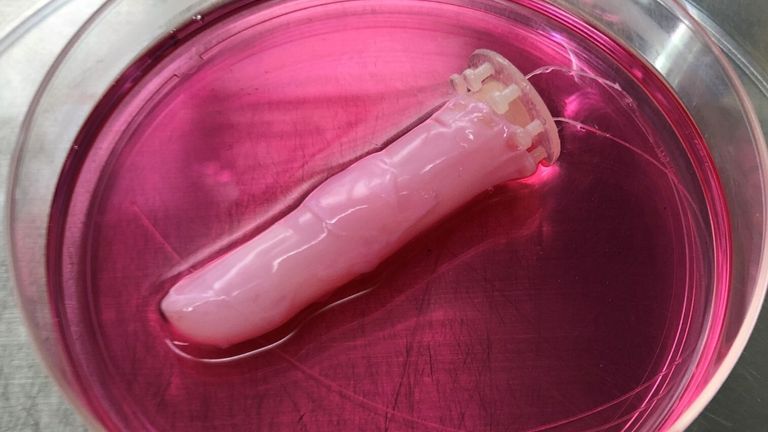[ad_1]
Scientists have created living human skin on robots that is water-repellent and can self-heal.
Scientists want robots to look like humans as much as possible so they are relatable, which is particularly important when they are used in the healthcare and service industries.
The researchers believe living skin is the solution to give robots the look and touch of being alive.
To create the skin, the researchers submerged a robotic finger into collagen and human dermal fibroblasts – the two main components that make up skin’s connective tissues.
Shoji Takeuchi, professor at the University of Tokyo, said: “The finger looks slightly ‘sweaty’ straight out of the culture medium.
“Since the finger is driven by an electric motor, it is also interesting to hear the clicking sounds of the motor in harmony with a finger that looks just like a real one.”
Although current silicone skin made for robots can imitate a human appearance, it does not have finer details like wrinkles, and cannot perform like human skin.
One of the difficulties with creating living skin sheets to cover robots is fitting them to moving objects with uneven surfaces.
Prof Takeuchi said: “With that method, you have to have the hands of a skilled artisan who can cut and tailor the skin sheets.
“To efficiently cover surfaces with skin cells, we established a tissue moulding method to directly mould skin tissue around the robot, which resulted in a seamless skin coverage on a robotic finger.”
According to Prof Takeuchi, the success lies in the natural shrinking tendency of this collagen and fibroblast mixture, which shrank and tightly conformed to the finger.
This layer also provided a uniform foundation for the next coat of human cells to stick to.
These cells make up 90% of the outermost layer of skin, giving the robot a skin-like texture and moisture-retaining barrier properties.
Read more from Sky News:
Brain changes found in ‘broken heart syndrome’ patients
Cancer disappears in every patient in small drug trial
Monkeypox designated a notifiable disease
The crafted skin is stretchy enough to move as the robotic finger curls and stretches, can be lifted with tweezers, repels water and can even self-heal with the help of a collagen bandage.
Prof Takeuchi said: “We are surprised by how well the skin tissue conforms to the robot’s surface.
“I think living skin is the ultimate solution to give robots the look and touch of living creatures since it is exactly the same material that covers animal bodies.”
The study is published in the journal Matter.
[ad_2]






